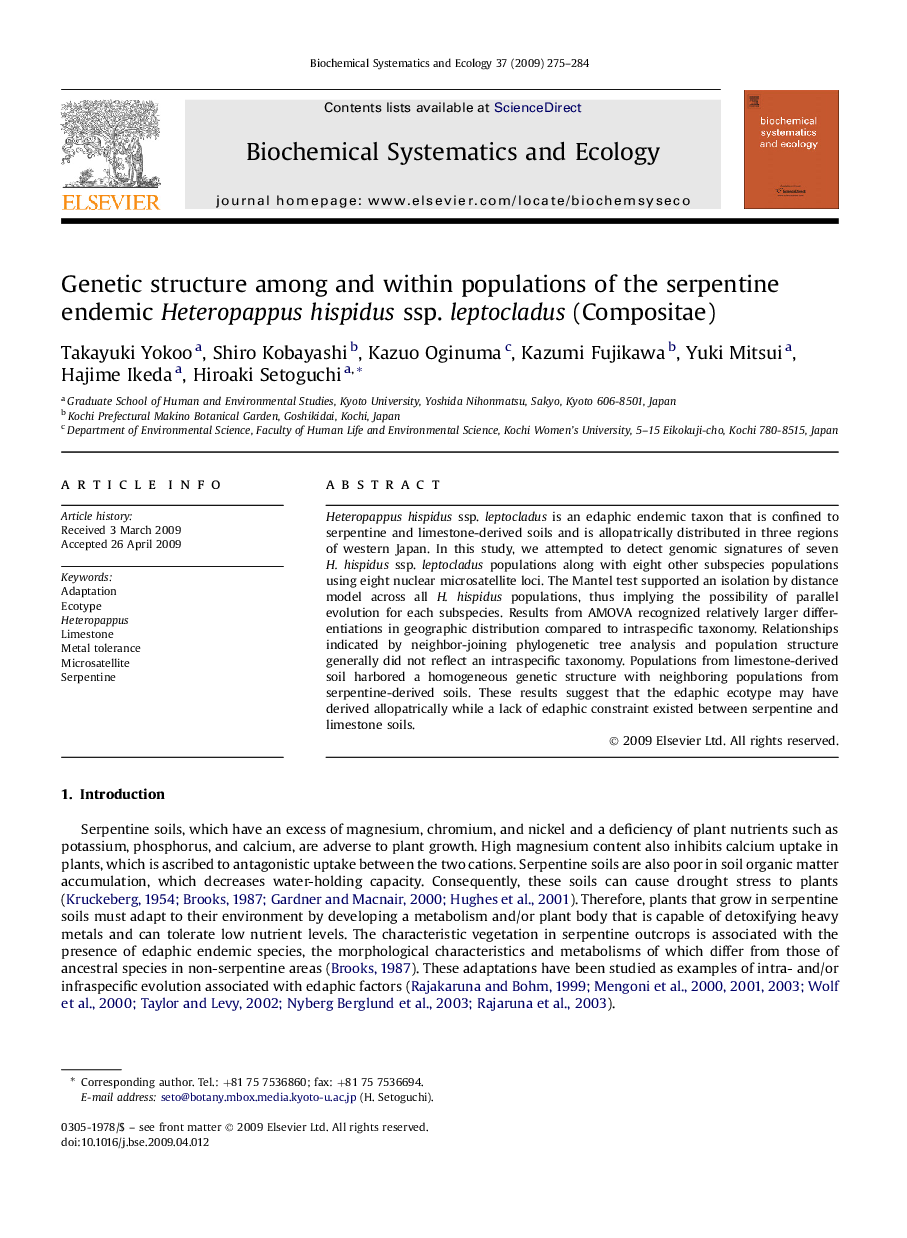| Article ID | Journal | Published Year | Pages | File Type |
|---|---|---|---|---|
| 1352261 | Biochemical Systematics and Ecology | 2009 | 10 Pages |
Heteropappus hispidus ssp. leptocladus is an edaphic endemic taxon that is confined to serpentine and limestone-derived soils and is allopatrically distributed in three regions of western Japan. In this study, we attempted to detect genomic signatures of seven H. hispidus ssp. leptocladus populations along with eight other subspecies populations using eight nuclear microsatellite loci. The Mantel test supported an isolation by distance model across all H. hispidus populations, thus implying the possibility of parallel evolution for each subspecies. Results from AMOVA recognized relatively larger differentiations in geographic distribution compared to intraspecific taxonomy. Relationships indicated by neighbor-joining phylogenetic tree analysis and population structure generally did not reflect an intraspecific taxonomy. Populations from limestone-derived soil harbored a homogeneous genetic structure with neighboring populations from serpentine-derived soils. These results suggest that the edaphic ecotype may have derived allopatrically while a lack of edaphic constraint existed between serpentine and limestone soils.
